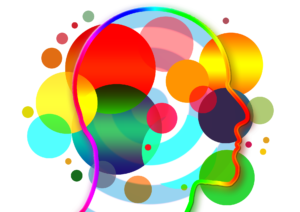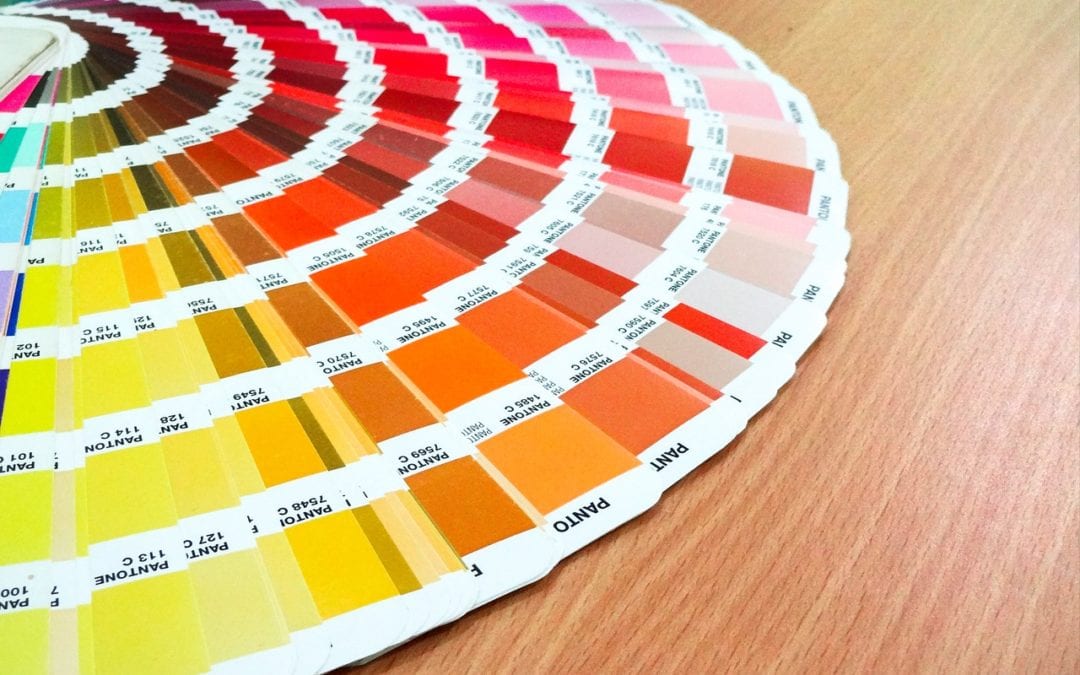The use of color psychology in marketing is a highly debated topic. While some believe using Color X will evoke Emotion Y, others believe color psychology is as accurate as the fortune teller at the county fair. In this post, we delve into the world of color psychology and will show you that not everything about color psychology should be dismissed when you are developing your brand.

What is Color Psychology?
Have you ever stopped to take a good look at what’s around you? Whether you are sitting at home, working in your office, or having a coffee at the corner café, you are surrounded by brand marketing.
Whether it’s the apple symbol on your computer, the green and white color scheme of your coffee cup, or the name on the back of your car, it’s all branding. Brands have been developed to help a customer immediately recognize a company and to help them form opinions about that product, good or bad.
While you may not be consciously aware of all the brand marketing around you, your brain is. In fact, up to 90 percent of the data your brain is processing is the visual information currently surrounding you. While shapes and sizes of items are being considered, your brain is spending most of its visual information processing time deciphering the colors it is perceiving.
Because color is such an important informational piece to your brain, the study of color psychology has been created. The aim of these studies is to determine if colors perceived by an individual will influence their behavior.
Does Color Psychology Work?
While color psychology studies continue to occur, researchers have started to find that using Colors X and Y will not guarantee an increase in sales by X%. The reason for this is because color preferences are subjective. Elements such as life experiences, age, gender, cultural differences and contexts all play a role in how we perceive color. That’s why you can’t make blanket statements like branding something orange will make more people buy your product or service.
What research has shown, however, is that color plays a huge role in how a product or service is perceived. If the color scheme matches what the consumer perceives about the product, then the brand has been positively reinforced in the consumers mind.
Color plays an important role in how a product or service is perceived Click To Tweet
Research has shown that color can increase brand recognition by 80 percent and a further 85 percent of consumers make purchasing decisions based on color. Therefore, choosing the right color scheme for your brand is very important.

Getting Noticed
Color is also important in being distinguishable. Your brain prefers brands that it can recognize, so the choice of color can help you stand out from the crowd. For example, if you are walking down the drink aisle of your local grocery store, the red cans with white writing will immediately stand out to you as Coca-Cola. You don’t even need to read the words to know that those colors mean this brand.
This is also where branding gets tricky. We have been trained to know that this color combination means this brand. Marketers, however, sometimes bank on the fact that strong brand recognition means customers are not reading labels carefully. This is why some store brands will use similar color combinations and be asked to be placed next to the big brands, in hopes that the consumer might grab their product instead of the name brand product. They will either mistakenly grab the store brand thinking it’s the name brand, or they will give the store brand a try as that color scheme subconsciously tells them that the product is trustworthy.
How to Use Color Psychology to Develop a Brand
In a previous post, we discussed the importance of creating an ideal client to determine your target audience. The same applies to developing your brand.
When you begin to develop a brand, you need to determine its “personality”. If you are specializing in the outdoors market, you may want a rugged personality. If you are catering to a new mom/baby market you may want a soft and comforting personality.
Once you have a personality in mind, you can start to develop a color scheme to support that personality. For example, if you are developing a soft personality for our new mom/baby niche, you could choose soft pastel hues to reflect your brand. These colors would subconsciously speak to the viewer and would convey that you get what kind of atmosphere the consumer is looking for.
If on the other hand you chose harsh tones of red and black for your brand, consumers won’t connect the color scheme to the soft personality brand. This confusion over branding may result in the consumer just moving on to another provider. You may have the exact same content in both scenarios, but the consumer may not stop long enough to read it as the tone doesn’t match what they are looking for. That is the power of color.
Final Thoughts on Color Psychology
While the use of color will not magically convince the consumer to trust and purchase your products, its strategic use can help build brand recognition and brand loyalty.
By creating a brand personality profile, you can use color psychology to choose colors for your logo, website and other marketing materials to reinforce the image you are trying to build. Once the consumer has learned what valuable content you are able to provide them, they will soon associate your color scheme with your brand, helping to reinforce your trustworthiness.
———-
In plain terms, WordPress (WP) is simply the top free platform upon which one can create
fantastic fully-featured websites or blogs of any size (best among both free or paid solutions).
Learn more about WordPress here.
***Gain more insight about how to install WordPress & your options.***
If you would like to consider working with us on our Premium or Standard Plans on a ongoing monthly basis, then we can do the job FREE as a trial (with no credit card required and assumes you have a interest potentially becoming a Standard or Premium Plan member . . . otherwise, please use the single one-off job option below).
See here: https://www.wpwebsitehelp.com/#plansandpricing
OR
2. If you only need us to do this one job only, then checkout here for this one-off single job.
See here: https://www.wpwebsitehelp.com/single-one-job/
Our plans can cover ongoing maintenance & annoying regular task items, of which, you should not spend your valuable time! This gives you peace of mind so you can focus your mind on your endeavor. We have you covered whether it is WordPress help or WordPress support for a business, personal, student, education, non-profit, or ministry endeavor.
Here are some examples along with HOW it works at WP Website Help.
Here are a few FAQ’s & our about us.
Jolene is a strong operations, compliance, and paralegal manager. She also loves to research and write about business as well as personal topics that help others.
Jolene @ The WP Website Help Team

